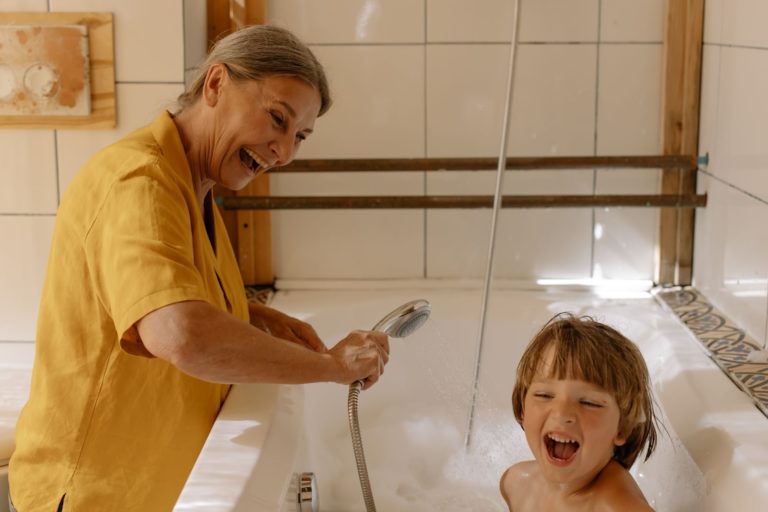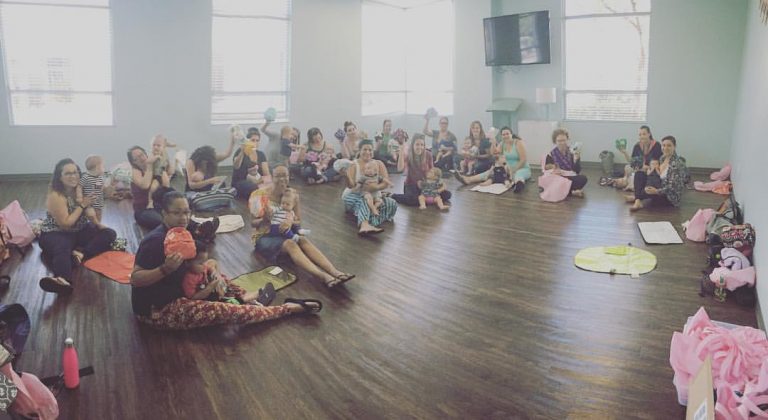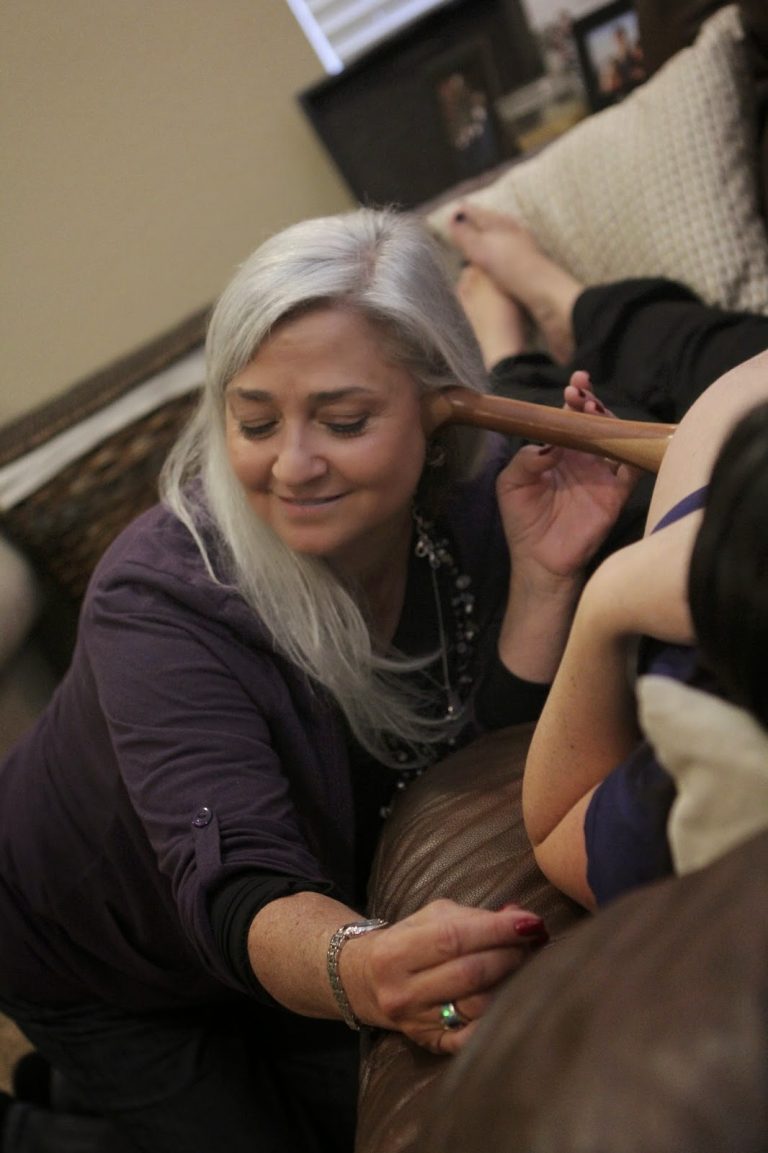Your Step by Step Guide to a Comfortable Breastfeeding Experience
7 minute read
Finally, after months of waiting, you’re holding your new baby in your arms! From the moment your little one is born, there are a number of things you can do to set yourself up for a successful — and comfortable! — chest/breastfeeding experience.
Even though you may be familiar with the many benefits lactation offers your baby (more on that here on the blog)… feeding can be an emotional rollercoaster in the beginning.
But with a little guidance, time and patience, you and your baby will get the hang of it! These tips and tricks will help you ease into chest/breastfeeding and all the challenges that go along with it.
A Strong Start: Stay Together After Birth
One of the best things you can do to set yourself up for success is to have your baby close to you as soon as possible after your birth. Keeping your baby with you — preferably with as much skin-to-skin contact as possible! — has several important benefits for you and your baby.
Holding your baby after birth will promote a feeling of closeness and will give you a boost of oxytocin which promotes healthy chest/breastfeeding.
And when your little one is able to rest on your belly, the skin-to-skin contact stimulates a natural reflex to seek out their source of food — you! This encourages them to move up toward your chest/breast, attach, and begin feeding.
Continuing skin-to-skin contact in the “golden hour” after birth along with the following days and weeks will promote healthy chest/breastfeeding!
Top Tips for Finding a Comfortable Chest/Breastfeeding Position
You’ll be spending countless hours feeding your little one. That’s why it’s so important to find a comfortable feeding position! Here are some simple steps to follow:
- Find a comfortable position where you feel supported: This could be sitting, lying back or lying down.
- Use your body to support your baby so your arms don’t take all their weight: Use pillows, cushions, or your favorite chest/breastfeeding pillow to help support your head, shoulders, body, arms and legs.
- Settle your baby into a comfortable chest/breastfeeding position: Some favorites to try are the cradle hold, cross-cradle hold, laid-back position, side-sitting/clutch/football hold, or reclining/laying down. You may prefer different positions depending on where you’re feeding your baby or what time of day it is.
- Keep your baby’s body in-line and close to your body: Your baby should have their entire body in one line facing in toward your chest, with their arms hugging your chest/breast (one arm below and one above).
- Support your baby’s shoulders: Or the base of their neck — but not the back of their head. This will allow your baby to move their head as they search for your chest/breast and get a good latch.
- Provide extra support for your baby: It can help to position your baby’s bum in your elbow crease, or have their feet against something firm like your thigh or your hand.
- Relax comfortably with your chest/breast in its natural position.
When in Doubt, Use CHINS for Comfortable Chest/Breastfeeding
This can be a lot to take in — let alone remember when you’re trying to establish successful chest/breastfeeding. That’s why we want to share this helpful mnemonic to help you get the most comfortable position for chest/breastfeeding.
When the going gets tough, just remember to keep your “CHINS” up (UNICEF)! You’ll be pros in no time.
C = Close: Your baby needs to be close to your body so they can scoop enough chest/breast into their mouth. (Make sure both your and baby’s clothing and hands are not in the way!)
H= Head free: When attaching to the chest/breast, your baby will tilt his head back to allow their chin to lead as he comes onto the chest/breast. (Even a finger on the back of the baby’s head will prevent this important movement.)
I = In line: Your baby’s head and body should be in alignment so that they don’t have to twist their neck, which would make feeding and swallowing difficult.
N = Nose to nipple: When your nipple rests below your baby’s nose, they will begin to root. As they tilt their head back, the nipple will slip under their top lip upwards and backwards to rest between the hard and soft palate. (This will be the most comfortable position for you and your baby!)
Getting a Comfortable Latch
Once you and your little one are nice and comfortable, it’s time to get the perfect latch! Here are some helpful steps to get you started.
There are different rules of thought on this —you may prefer to let your baby search for your chest/breast, avoiding the temptation to help them latch on. Or you may find it easier to help guide your baby to your chest/breast — leading their nose toward your nipple.
Either way works! Try testing it out both ways to see what works best for your and your baby.
The important thing is: You want your baby to get a deep latch instead of attaching solely at the nipple. This will be the most comfortable for you — you don’t want your nipple to get pinched, ouch! — and give your little one the most milk.
The secret to success? Getting your baby to open their mouth nice and wide! Like they were about to take a big delicious bite of their favorite sandwich.
Your baby’s chin should hit your chest/breast below the areola — the darker skin around the nipple. The pressure of your chest/breast will make them open their mouth and reach up and over your nipple. This will help them get a deep latch with your nipple far back into their mouth — not being pinched by their lips or gums!
If you’re having trouble getting your baby to open their mouth, you can try tickling their upper lip with your nipple. This can encourage them to open their mouth a bit wider. Watch your baby’s lower lip and aim it as far from the base of the nipple as possible so that your little one takes a large mouthful of chest/breast.
How to Know if Your Latch is Correct
Once you’ve gotten your baby to latch, you may be wondering how to tell if you’re doing things right! Here are some signs of a good and proper latch (Office on Women’s Health):
- The latch feels comfortable to you and does not hurt or pinch.
- Your baby’s chest rests against your body.
- Your baby does not have to turn their head while nursing.
- You see little or no areola depending on the size of your areola and the size of your baby’s mouth.
- When your baby is positioned well, their mouth will be filled with chest/breast.
- The baby’s tongue is cupped under the chest/breast, so you might not see the baby’s tongue.
- You hear or see your baby swallow. Some babies swallow so quietly that a pause in their breathing may be the only sign of swallowing.
- You see your baby’s ears “wiggle” slightly.
- Your baby’s lips turn outward like fish lips, not inward. You may not even be able to see the baby’s bottom lip.
- Your baby’s chin touches your chest/breast.
Can My Baby Breathe?
This is a common worry for many parents as they begin to nurse their baby. But, the answer is yes! Your baby can breathe while they’re nursing. Only the tip of their nose should be touching your chest/breast and their nostrils flare to allow air in.
Breaking the Suction
If chest/breastfeeding feels painful, you need to take a break, or your baby is done eating but continuing to just suck-suck-suck along… The best way to end a feeding session is by breaking the suction of your baby’s latch. This will prevent your nipple from being pinched as your baby comes off your chest/breast.
Simply insert a clean finger into the corner of your baby’s mouth. Your finger should be between your baby’s gums to break the suction. You can gently turn your finger and pull toward your chest/breast a bit. Once the suction is broken — remove your nipple from your baby’s mouth so that they don’t accidentally chomp down on you!
Practice Makes Perfect! — Your First Chest/Breastfeeds
Just remember, you and your baby are both learning this new skill! Like anything new it takes time and practice.
Chest/breastfeeding early and often will help you and your baby to get lots of practice latching and getting into a comfortable rhythm. That way when your milk comes in, you’ll already be well on your way to feeling like a chest/breastfeeding champ.
But don’t be discouraged if it takes you both a little while. It can often take a few weeks for chest/breastfeeding to feel totally comfortable and natural — even if you’ve done it before! Every child is different and will have unique needs.
Nipple Pain During Feeding
When your baby latches on it may cause some pain for the first few seconds. But this discomfort should subside. If you continue to experience pain and sore nipples — this is a sign that something isn’t quite right.
The most common reason for nipple pain is how your baby is latching onto your chest/breast. Try different holds to see if things get easier.
You can also try letting your baby take the lead by placing your baby on your tummy while you recline back and allow them to find your chest/breast — just like you did during those first hours after birth!
Get Support
If you’re still experiencing pain and aren’t sure what to do — reach out to a lactation consultant for help. At Babies in Bloom we offer group and private lactation consulting support, in person and virtually.
It can also be helpful to take a Breastfeeding 101 class — before or after the arrival of your little one! — to help you both get off to a good start and avoid common problems.
Plus, it’s always comforting to be around other new parents and their babies. Consider joining a Breastfeeding Support Group like our Lactation Lounge! This group is free and open to all mothers in the community and is facilitated by an International Board Certified Lactation Consultant.
Helpful Tools for Your Chest/Breastfeeding Journey
At the end of the day, all you really need to successfully chest/breastfeed your baby…is your chest/breasts! And maybe a comfy place to sit.
But there’s no doubt that there are certain things that can make your chest/breastfeeding journey a bit easier. Nursing pads if you have leaky boobs… Lactation support tea to help boost your milk flow… Nipple cream to help soothe sore nipples.
We want to support you along your journey — which is why we’ve pulled together our favorite breastfeeding products in the Babies in Bloom Boutique. Check it out online or stop by our new location at 127 Main Street, Vista, CA 92081 to get the help you need.






